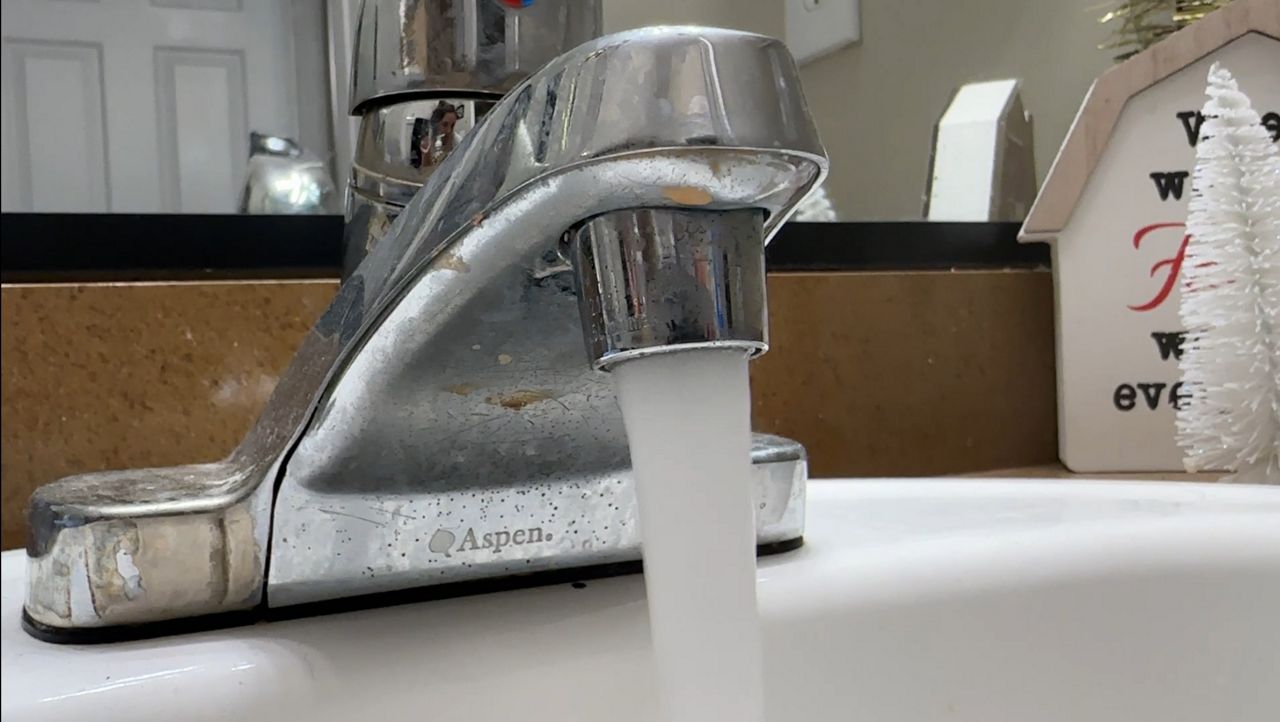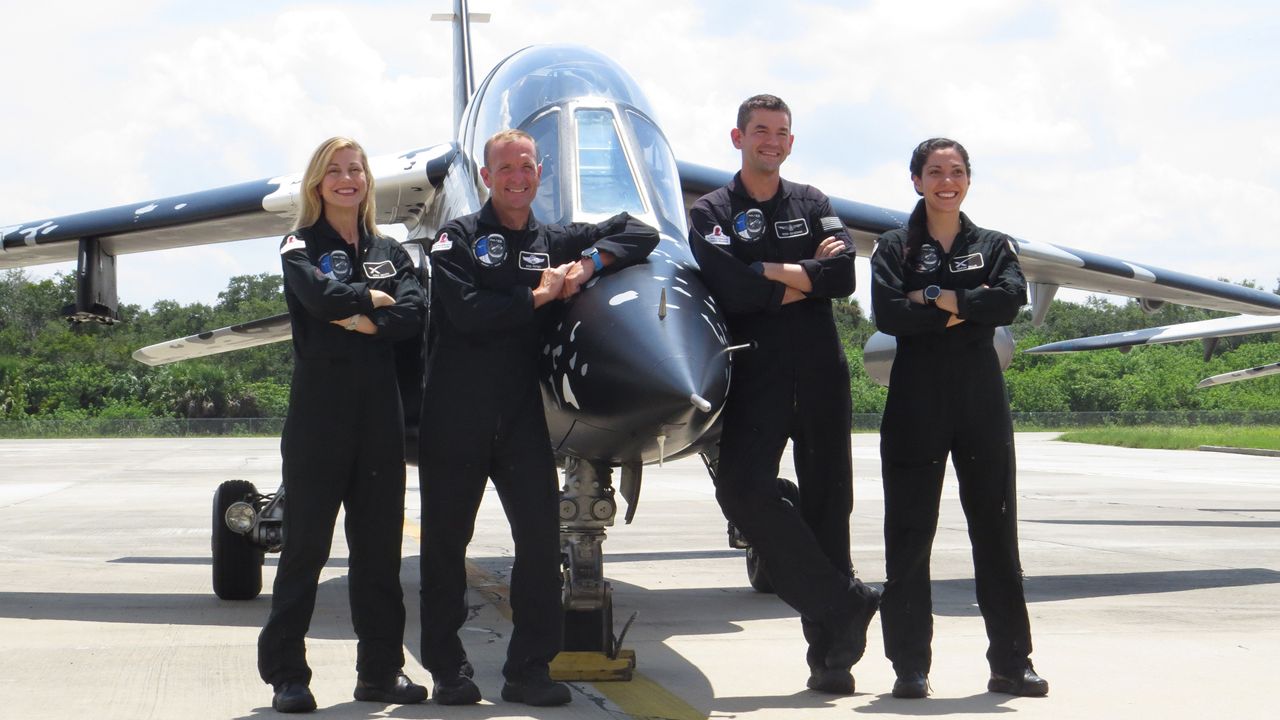After decades of setbacks, technical challenges, budgeting woes and weather delays, the roughly $10 billion James Webb Space Telescope (JWST) is finally ready to launch.
On Wednesday, NASA, European Space Agency (ESA) and Arianespace confirmed Christmas morning is the target launch date for the observatory.
More powerful than the Hubble Space Telescope, Webb is designed to peer back in time to about 100 million years after the Big Bang and examine some of the earliest formed stars and galaxies using infrared wavelengths.
“Hubble and all the other telescopes have been able to get us back to 600 or 700 million years after the Big Bang. But that 600 or 700 million years between the Big Bang and where Hubble has been able to get us to, a lot goes on,” said Dr. Eric Perlman, an astrophysicist at Florida Tech in Melbourne. “It’s a lot that we haven’t seen and it’s stuff that we need to learn about in order to figure out how it is that the universe came into being and came to be the way that we see it today.”
Perlman has not only spent time with numerous ground-based telescopes, but also has been awarded precious observation time using some of the most powerful space-based telescopes, like Hubble and the Chandra X-ray Observatory.
Unlike the Hubble, which used mostly optical and ultraviolet wavelengths, Webb will use infrared.
Perlman, whose research has been focused in part on black holes, said the scientific knowledge that can be unlocked through Webb is incredible and can advance our understanding of the universe.
“We want to see those first stars. We want to see the formation of the first groups and clusters galaxies. We haven’t seen those things,” Perlman said. “We want to see not only individual ones, but we want to see large numbers of them so that we can say ok, this was the population that nature gave us at that particular time.”
Before Webb was Webb
Before it had a name, in 1989, the James Webb Space Telescope was first seriously discussed as a concept during the Space Telescope Science Institute in Baltimore, Maryland, the year before the launch of the HST.
Garth Illingworth, the former deputy director of the Space Telescope Science Institute (STSI), wrote in a 2016 newsletterthat he and then Research Branch Head Peter Stockman began working on the concept of a successor to Hubble along with engineer Pierre Bely in 1986.
“Given the modest beginnings to this effort, it was striking that it rapidly gained in visibility and interest,” Illingworth wrote.
A workshop held in September 1989 dubbed “The Next Generation: A 10 m Class UV-Visible-IR Successor to HST” planted the seeds that would eventual become JWST. A committee was commissioned by NASA to study the prospect in 1993.
By the end of 1996 after nearly two-year feasibility study by NASA’s Goddard Space Flight Center and STSI, it was given the green light to move ahead.
GSFC teamed with Ball Aerospace and TRW to determine the technical design requirements. TRW was acquired by Northrop Grumman Corporation in 2002 in a $7.8 billion merger agreement.
2002 was also the year that the telescope was renamed from the “Next Generation Space Telescope” to the “James Webb Space Telescope,” named after the second NASA administrator.
The early 2000s brought a lot of promise for Webb. Construction began on the primary mirror in March 2004 and ESA’s Ariane 5 rocket was selected as the launch vehicle the following year.
Money troubles for Webb
At a current cost estimate of nearly $10 billion, Webb has ballooned in its sticker price since it first got underway.
Illingworth noted in his 2016 newsletter that a 1990 panel estimated a $2 billion price tag in 1990 dollars with a 1998 project start date and a launch in 2009. But the committee they reported to didn’t accept that recommendation and instead issued a $1 billion cost estimate in its 2000 Decadal Survey.
“Inflating the 1990 $2 billion estimate to 2000 dollars gives $2.6 billion,” Illingworth wrote. “As events have shown, this would have been a better starting cost estimate for NGST in the 2000 Decadal, but given the political environment at the time, such a figure could well have killed NGST/JWST before it got started.”
Following significant delays, an Independent Comprehensive Review Panel (ICRP) was set up at the request of former Maryland Senator Barbara Mikulski in 2010.
The panel’s report, which was issued later that year, noted major snag was hit after NASA selected its prime contractor and that it encountered “a prolonged technology development period.”
It further stated that between 2002 and 2008, “JWST struggled with several cutting-edge developments. These developments took longer and consequently cost more than forecast during Formulation, prompting NASA Administrator Michael Griffin to note that JWST had been underfunded during that period.”
Additional scathing commentary from the report stated that “The Agency and Project seem to be ‘flying blind’ without a full bottoms-up cost assessment, validated by an independent analysis.”
As a result of poor budgeting, it noted that the NASA management was pushed to move the baseline launch date from June 2013 to June 2014. The report later stated that the “earliest achievable launch date, previously thought to be June 2014, now appears to be September 2015.”
Following the ICRP report and a rebaseline by NASA, the agency’s 2012 MPAR Project Cost Estimate stated that “the launch date moved from 2014 to 2018 and the development cost increased from $2.581 to $6.198 billion.”
Fast-forward to June 2018, NASA announced that a new launch date of March 30, 2021 was set for Webb in response to the findings of another Independent Review Board, this one established in April 2018.
Another delay meant another hike in the price tag. The new estimate to support the lifecycle of Webb was then estimated to be $9.66 billion. The cost to reach the launch date itself was $8.8 billion, which the agency said was “up from the $8 billion development cost estimate established in 2011.”
Launch day and beyond
A 32-minute launch window will open at 7:20 a.m. EST on December 25 for the Ariane 5 rocket to take off from the coast of French Guiana. The rocket is scheduled to roll out to the launch pad on Thursday, December 23.
Stage separation of Webb will happen just over 27 minutes into the launch and it will begin its 30-day, solo journey of a million miles out to what’s known as the second Lagrange point.
The first two weeks of that will see the deployment of all the instruments and the sunshield of Webb followed by a cooldown period, during which virtually everything has to go exactly right.
“A million things could go wrong and they could go wrong at any step and we can’t get there to fix it, like we could with Hubble,” Perlman said.
During a prelaunch science press conference, Amber Straughn, the Webb deputy project scientist for communications at GSFC, noted that the first images from Webb will be released about six months after launch on December 25.
“I’m extremely excited and I think it’s not only the excitement at finding out what I want to find out, it’s questions that I don’t even know exist right now,” Perlman said.









